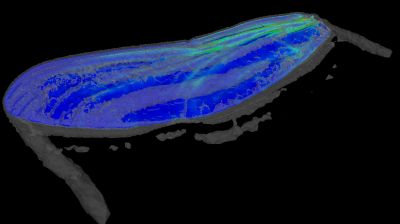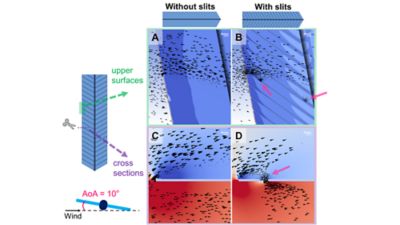Case Study
-
United States -
United Kingdom -
India -
France -
Deutschland -
Italia -
日本 -
대한민국 -
中国 -
台灣
-
Ansys는 학생들에게 시뮬레이션 엔지니어링 소프트웨어를 무료로 제공함으로써 오늘날의 학생들의 성장을 지속적으로 지원하고 있습니다.
-
Ansys는 학생들에게 시뮬레이션 엔지니어링 소프트웨어를 무료로 제공함으로써 오늘날의 학생들의 성장을 지속적으로 지원하고 있습니다.
-
Ansys는 학생들에게 시뮬레이션 엔지니어링 소프트웨어를 무료로 제공함으로써 오늘날의 학생들의 성장을 지속적으로 지원하고 있습니다.
“Our lab seeks to decipher the biomechanical reason behind animal and plant shapes, particularly from a fluid dynamics perspective. We once tried an open-source CFD software, but it took a few months for students (who may spend less than a year in the lab) to learn it and they were unable to explore the morphological parameter space sufficiently. Therefore, I believe that Ansys Fluent software is one of the best options for students who use CFD as a problem-solving tool.”
— Masateru Maeda, Associate Professor, Takushoku University
Organisms have different shapes for many reasons. One important aspect, particularly for animals who fly or swim, is fluid dynamics. Masateru Maeda, an associate professor at Takushoku University in Japan, is currently working on several research programs with focuses on insect wings, bird feathers, and plant leaves.
The use of numerical simulation proves beneficial for comparing shapes, as it enables users to determine precise geometries through computational models. Completing the study with actual organisms, or individual (intraspecific) variations, would take substantial effort and time. The use of CFD significantly reduces research time and cost.
Challenges
While studying the flight of a dragonfly, the goal was to simultaneously obtain the airflow around the dragonfly wing as well as the strain distribution on the wing (Figure 1) because people now know that a dragonfly wing possesses hundreds of airflow sensors and strain sensors and it is necessary to obtain the precise flow field and strain field so as to study how does the insect utilize the information collected.
Researchers have also worked on the aerodynamics of a bird feather, testing several geometrical models. So far, they have acquired some basic data that indicates that a feather without slits outperforms the one with slits (Figure 2), though there is a need for further research.

Gliding FSI simulation of a dragonfly wing model showing surface strains and vortical structures (Q-isosurface). This study is in collaboration with Professor Richard Bomphrey, Royal Veterinary College, U.K.
Engineering Solutions
- Maeda states that the Meshing capability is generally easy and intuitive to work with. He reports it is fairly robust when generating inflation layers (prism layers).
- With Fluent software, intuitive GUI is very effective for beginners. TUI (text user interface) can be tricky, but it is not so difficult once learned and can actually be much more efficient than GUI (e.g., for defining forces).
- Maeda says Mechanical software and the System Coupling tool are impressively easy for running fluid-structure interaction (FSI) simulations once learned.

Gliding CFD for two simplified feather models, with and without slits, showing surface pressure (A, B) and cross-sectional pressure (C, D). The black arrowheads detail velocity vectors, while the magenta arrows in B and D indicate flows through the slits.
Benefits
Thanks to the Ansys products, Maeda can focus on the actual simulations rather than the development of numerical methods or generating adequate quality mesh. This is particularly impactful for undergraduate students who have less than a year to complete their thesis projects.
Additionally, fluid-structure interaction (FSI) remains to be difficult in experiments involving living organisms. In numerical simulation, for example, the mass of the distal portion of a dragonfly wing, called ‘pterostigma,’ which acts to stabilize the oscillation in gliding flight can be instantly changed from the original mass to zero or even 10 times the original mass.
시작하기
엔지니어링 과제에 직면하고 있다면우리 팀이 도와드리겠습니다. 풍부한 경험과 혁신에 대한 헌신을 가지고 있는 우리에게 연락해 주십시오. 협력을 통해 엔지니어링 문제를 성장과 성공의 기회로 바꾸십시오. 지금 문의하기










